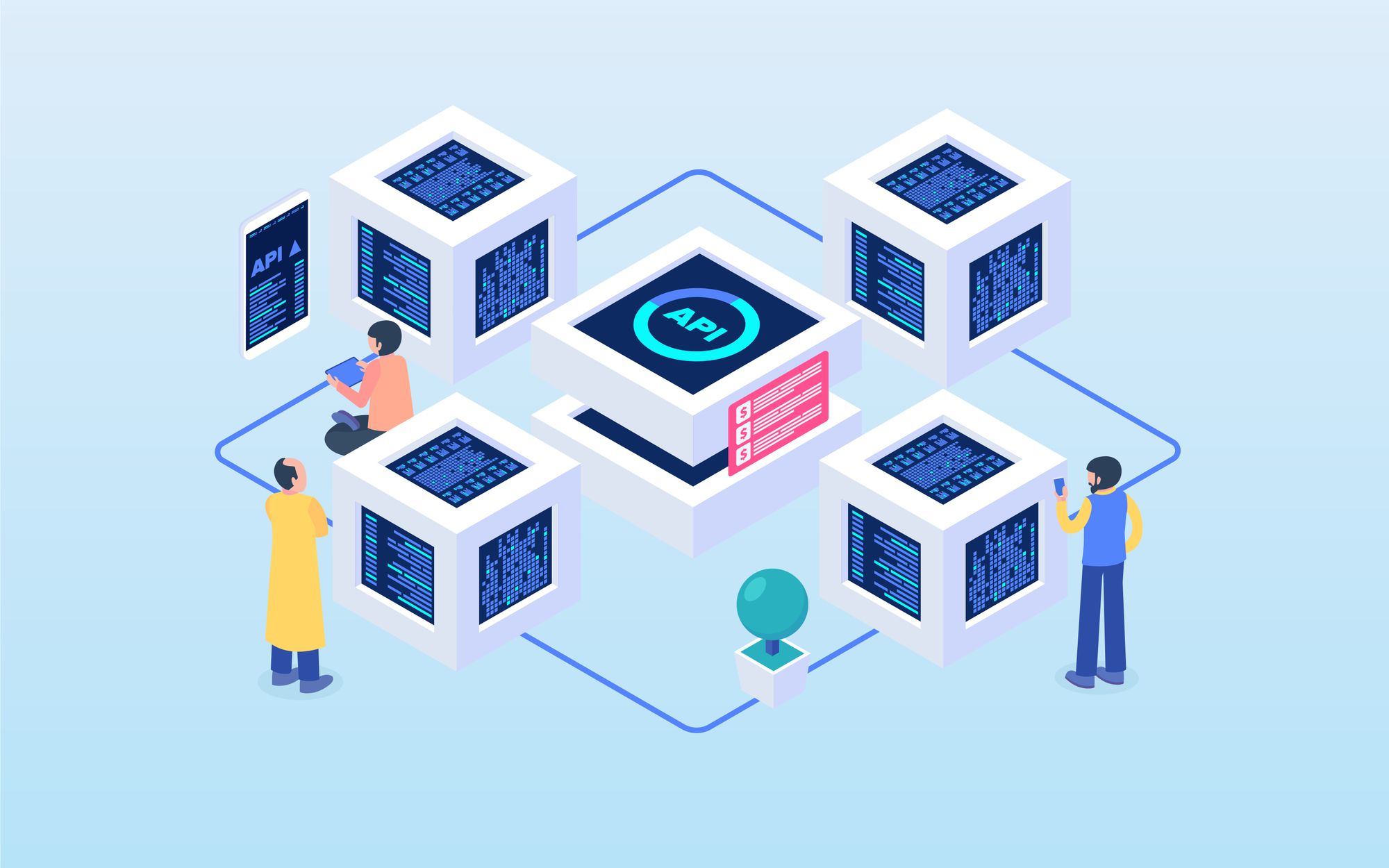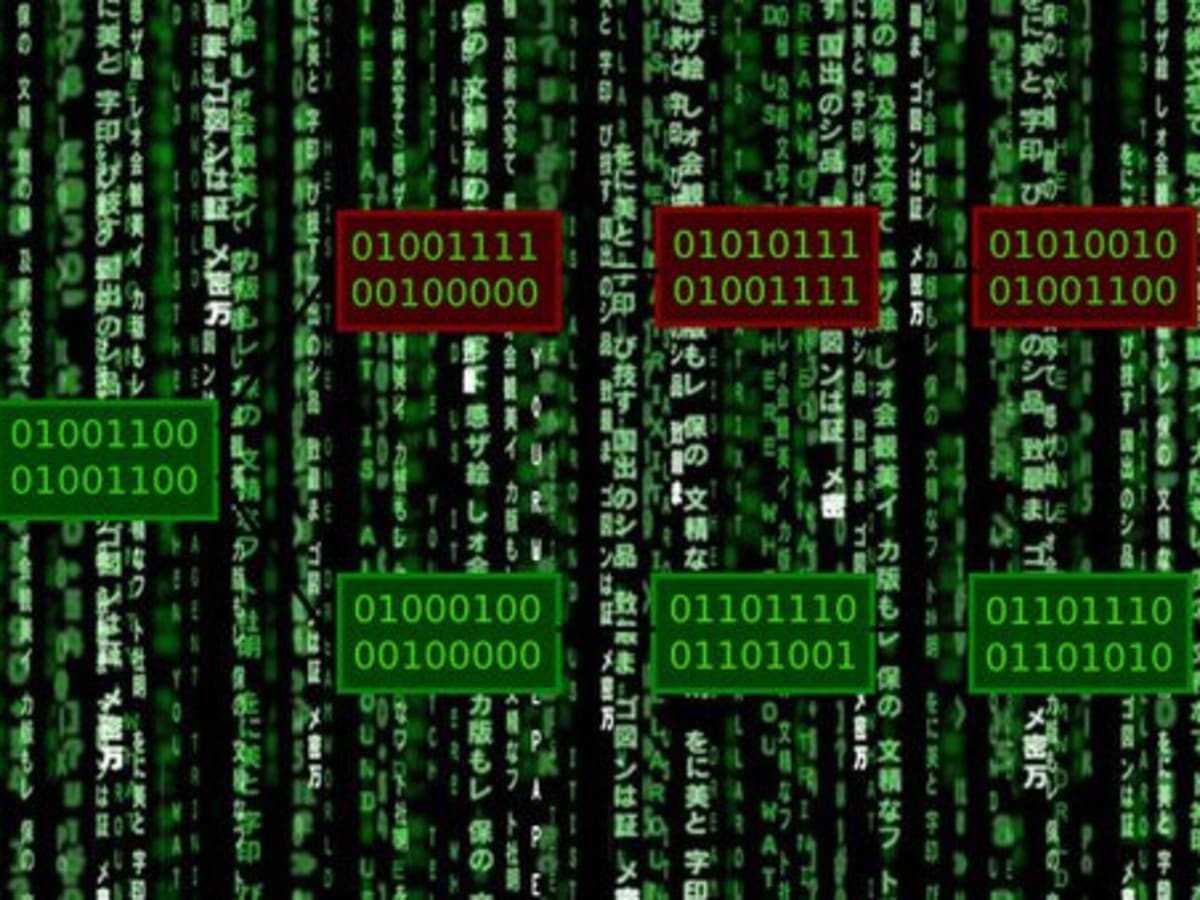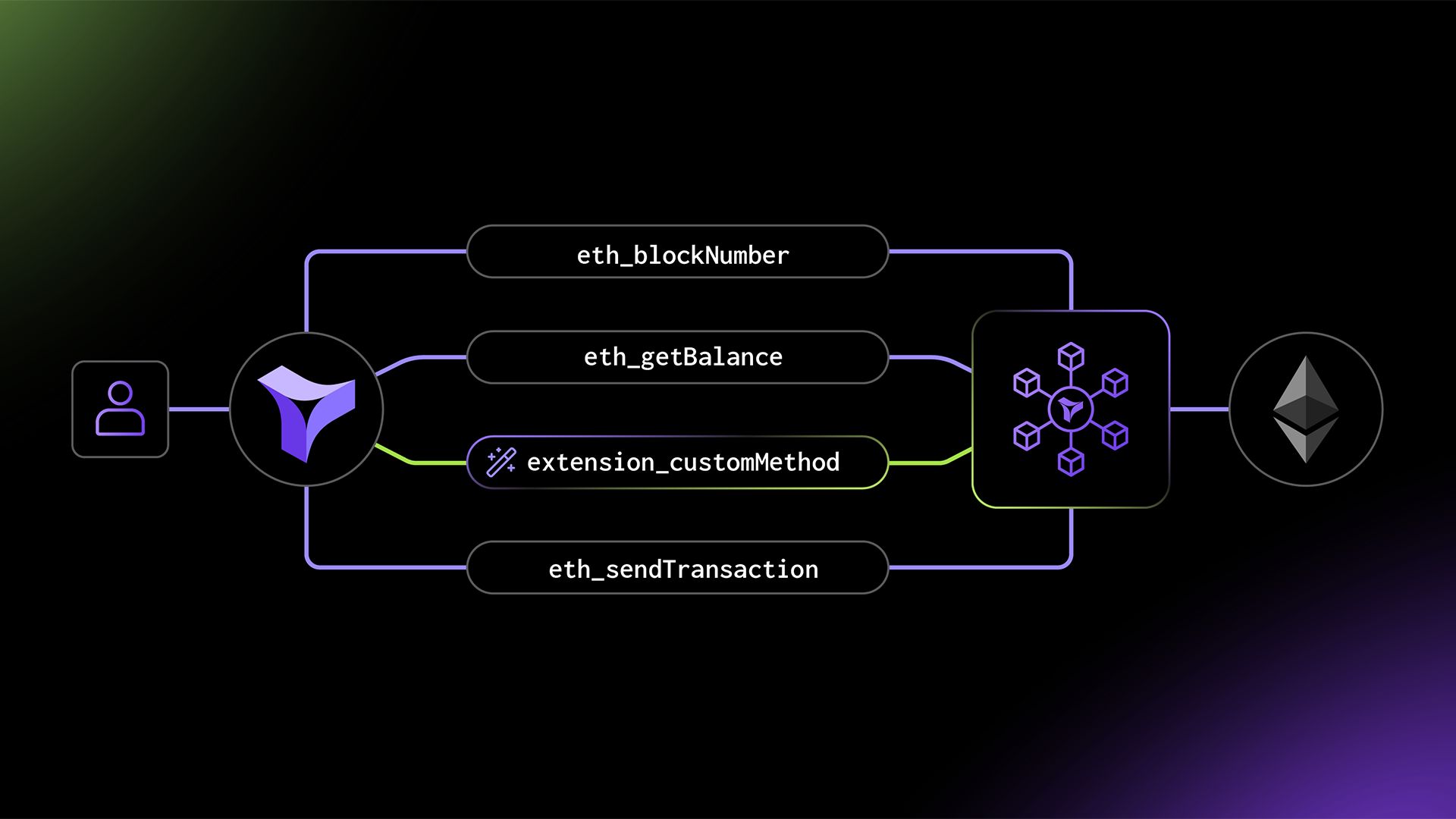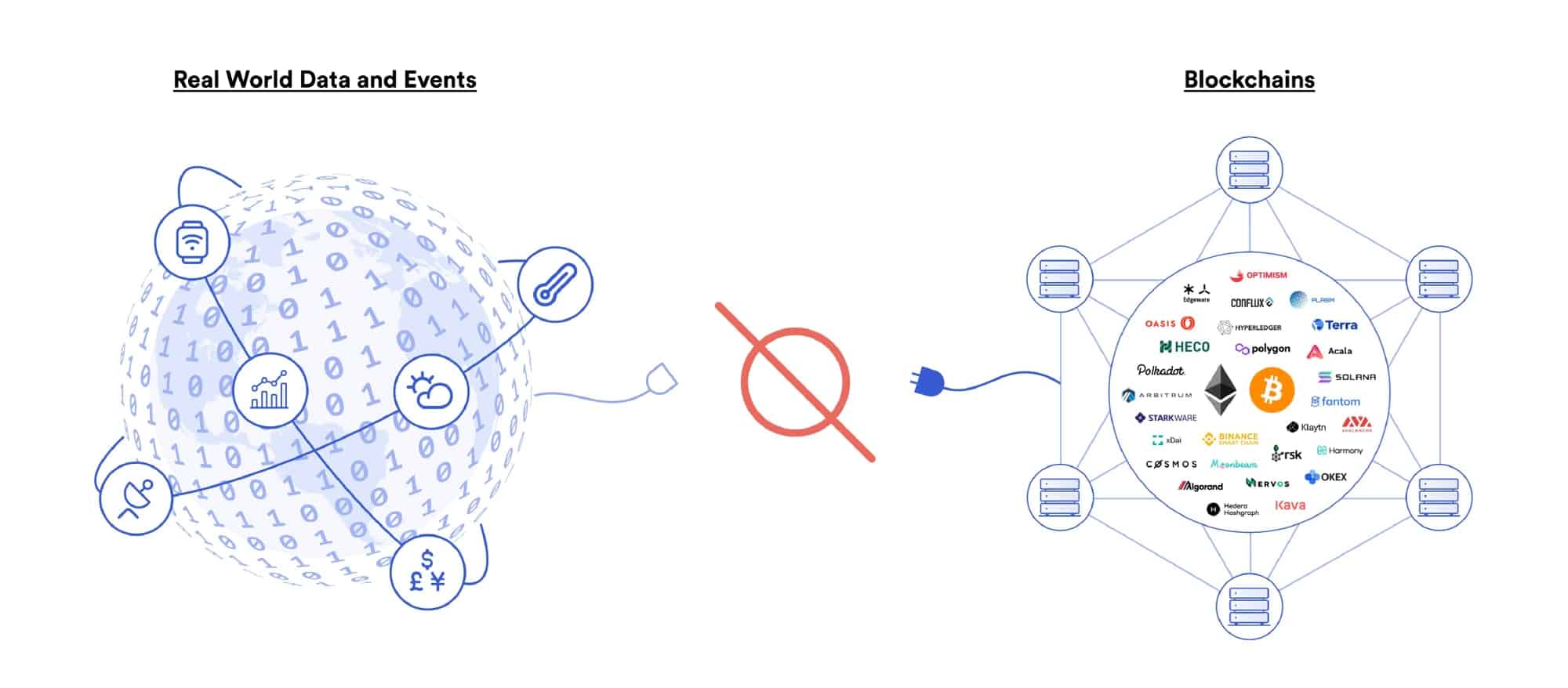Introduction
Welcome to the world of blockchain applications! In recent years, blockchain technology has revolutionized various industries, from finance to supply chain management. Businesses and developers are now leveraging the power of blockchain to create innovative and secure applications that can disrupt traditional systems.
Initially introduced as the underlying technology for cryptocurrencies like Bitcoin, blockchain has evolved into a versatile tool that can be used for a wide range of applications. It is a decentralized, distributed, and immutable system that ensures transparency and trust among participants.
In this article, we will explore the fundamentals of blockchain applications and provide you with a step-by-step guide on how to create your own. Whether you are a developer looking to build a blockchain application or a business owner interested in exploring the potential benefits, this guide will serve as your roadmap to success.
So, what exactly is a blockchain application? Simply put, it is an application that utilizes blockchain technology as its underlying framework. Rather than relying on a central authority or database, blockchain applications operate on a peer-to-peer network where participants can interact and transact securely.
The benefits of blockchain applications are numerous. Firstly, they offer enhanced security and tamper-proof records, thanks to the immutability and cryptographic features of the blockchain. This makes them highly resistant to hacking and fraud, making them suitable for applications requiring high levels of trust.
Secondly, blockchain applications eliminate the need for intermediaries, reducing costs and streamlining processes. By leveraging smart contracts, blockchain applications can automate agreements and transactions, removing the need for manual intervention.
Blockchain applications also bring improved transparency and traceability to industries where information sharing is crucial. With a blockchain, participants can track the entire lifecycle of a transaction or asset, ensuring accountability and reducing the risk of fraud.
Now that we understand the concept and advantages of blockchain applications, let’s delve into the common types of blockchain applications you can develop and explore the step-by-step process of creating your own blockchain application.
What is a Blockchain Application?
A blockchain application is a software application that utilizes blockchain technology as its underlying framework. It leverages the decentralized, distributed, and immutable nature of blockchain to create secure, transparent, and efficient solutions for a variety of use cases.
At its core, a blockchain application operates on a network of computers called nodes, which work together to validate and record transactions. These transactions are bundled into blocks and added to a chain of previous blocks, forming a chronological and permanent record known as the blockchain.
One of the key features of a blockchain application is decentralization. Unlike traditional centralized applications, where a central authority controls the flow of information and transactions, blockchain applications distribute this control among all participants. Each node in the network has a copy of the entire blockchain, ensuring that no single entity has complete control and making the system more resistant to censorship and manipulation.
Another important aspect of blockchain applications is immutability. Once a transaction is recorded on the blockchain, it cannot be altered or deleted. This is achieved through cryptographic algorithms that ensure the integrity of the data. As a result, blockchain applications provide an auditable and tamper-proof record of all transactions, enhancing transparency and trust.
Blockchain applications have the potential to revolutionize various industries by addressing critical challenges such as security, transparency, and inefficiency. They can be utilized in finance to create decentralized cryptocurrencies, streamline cross-border payments, and enable peer-to-peer lending and crowdfunding platforms.
In supply chain management, blockchain applications can improve traceability by providing real-time visibility into the movement of goods and ensuring the authenticity of products. Additionally, they can enhance the efficiency of voting systems, healthcare record management, intellectual property protection, and more.
The development process of a blockchain application involves several steps, from defining its purpose and use case to designing the architecture, developing the backend, building the frontend user interface, and implementing security measures. Each step requires careful planning and consideration to ensure a successful and reliable application.
In the next sections of this guide, we will discuss each of these steps in detail and provide insights and best practices for creating your own blockchain application. So, let’s dive in and explore the exciting world of blockchain application development!
Benefits of Blockchain Applications
Blockchain applications offer numerous benefits that make them increasingly popular in various industries. Let’s explore some of the key advantages they bring to the table.
1. Enhanced Security: Blockchain applications leverage cryptographic algorithms and decentralized networks to provide a high level of security. The immutability of the blockchain makes it extremely difficult for hackers to tamper with the stored data, ensuring the integrity and authenticity of transactions.
2. Increased Transparency: Transparency is a fundamental attribute of blockchain applications. Since the blockchain is a distributed ledger that is accessible to all participants, it promotes transparency by allowing everyone to view and verify transactions. This transparency reduces the risk of fraud and builds trust among participants.
3. Cost Efficiency: By eliminating intermediaries and automating processes through smart contracts, blockchain applications reduce costs significantly. Transactions can be executed directly between parties, eliminating the need for third-party intermediaries and reducing associated fees.
4. Improved Traceability: Blockchain applications provide an immutable and transparent record of transactions, making it easy to track and trace the movement of assets. In supply chain management, for example, blockchain applications can ensure the authenticity and provenance of products, reducing the risk of counterfeit goods.
5. Increased Efficiency: Traditional processes often involve extensive paperwork, manual verification, and time-consuming reconciliation. Blockchain applications streamline these processes by automating them through smart contracts and digitizing records. This improves efficiency, reduces human error, and accelerates transaction times.
6. Decentralization: The decentralized nature of blockchain applications eliminates the need for a central authority, which enhances resilience and eliminates single points of failure. This makes blockchain applications more resistant to censorship, manipulation, and system failures.
7. Greater Accessibility: Blockchain applications enable financial inclusion by providing access to financial services for individuals who do not have access to traditional banking systems. With blockchain-based solutions, individuals can send and receive money, access loans, or participate in crowdfunding platforms without the need for a traditional bank account.
8. Innovation and Disruption: Blockchain applications have the potential to revolutionize industries by introducing innovative business models and disrupting traditional systems. They enable new possibilities, such as decentralized identity management, decentralized marketplaces, and decentralized governance.
These are just a few of the many benefits that blockchain applications offer. As the technology continues to evolve and mature, we can expect to see even more profound impacts on various sectors of the economy. Whether it’s finance, supply chain management, healthcare, or any other industry, blockchain applications have the potential to reshape the way we conduct business and interact with each other.
Common Types of Blockchain Applications
Blockchain technology has opened up a world of possibilities in application development. Here, we will explore some of the common types of blockchain applications that are being utilized in various industries.
1. Cryptocurrencies: The most well-known use case of blockchain applications is cryptocurrencies. Bitcoin, Ethereum, and other cryptocurrencies are built on blockchain technology, offering decentralized digital currencies that provide secure and transparent transactions.
2. Supply Chain Management: Blockchain applications are transforming supply chain management by improving transparency and traceability. With a blockchain, participants can track the entire lifecycle of a product, ensuring authenticity and reducing counterfeiting risks.
3. Smart Contracts: Smart contracts enable the automation of agreements and transactions on the blockchain. They are self-executing contracts with predefined rules that are automatically enforced, eliminating the need for intermediaries. Smart contracts are commonly used in areas such as real estate, insurance, and supply chain management.
4. Identity Management: Blockchain applications can provide a decentralized and secure identity management system. Users can have full control over their digital identities, reducing the risk of data breaches and identity theft. This has applications in areas like voting systems, healthcare, and digital identity verification.
5. Decentralized Finance (DeFi): DeFi applications leverage blockchain technology to enable decentralized financial services. These applications allow individuals to access lending, borrowing, and trading services without relying on traditional financial institutions. DeFi is reshaping the financial landscape by providing greater access and eliminating intermediaries.
6. Healthcare: Blockchain applications in healthcare are being explored to enhance privacy, security, and interoperability of medical records. Patients can have control over their health data and securely share it with healthcare providers, ensuring accuracy and confidentiality.
7. Intellectual Property: Blockchain applications can provide a transparent and secure platform for managing intellectual property rights. Artists, musicians, and content creators can register their work on the blockchain, protecting their ownership and ensuring fair royalties.
8. Energy Trading: With blockchain applications, peer-to-peer energy trading can be facilitated, allowing individuals to sell and buy excess energy directly from each other. This enables a more efficient and transparent distribution of energy resources.
These are just a few examples of the common types of blockchain applications. However, the possibilities are endless, and blockchain technology continues to spark innovation in many other areas. Whether it’s finance, supply chain management, healthcare, or intellectual property, blockchain applications have the potential to revolutionize industries and create new opportunities for businesses and individuals.
Planning Your Blockchain Application
Before embarking on the development of a blockchain application, it’s crucial to plan and strategize to ensure a successful outcome. Here are some key steps to consider when planning your blockchain application:
1. Define the Purpose and Use Case: Clearly articulate the problem your blockchain application aims to solve and identify the specific use case. Understanding the purpose and use case will help shape the design and development process.
2. Research Existing Solutions: Explore existing blockchain applications in the same industry or space to gain insights and identify potential gaps or areas for improvement. This research will provide valuable information on best practices, features, and user expectations.
3. Identify Target Users and Stakeholders: Determine who your target users are and understand their needs and pain points. Identify key stakeholders, such as business partners or regulatory authorities, who may have an impact on the application’s success.
4. Choose the Right Blockchain Platform: Evaluate different blockchain platforms, such as Ethereum, Hyperledger, or Corda, to determine which one aligns best with your application’s requirements. Consider factors like scalability, security, smart contract capabilities, and community support.
5. Design the Architecture: Define the architectural design of your blockchain application, including the data model, consensus mechanism, and privacy requirements. Consider whether a public, private, or consortium blockchain is most suitable for your use case.
6. Develop the Backend: Implement the backend infrastructure of your blockchain application, including smart contracts, transaction processing logic, and data storage. Ensure proper testing and security measures are in place to prevent vulnerabilities and exploits.
7. Build the Frontend User Interface: Design and develop an intuitive and user-friendly frontend interface for your blockchain application. Consider factors like usability, responsiveness, and compatibility with different devices and platforms.
8. Implement Security Measures: Blockchain applications require robust security measures to protect user data, prevent unauthorized access, and safeguard against cyber threats. Implement encryption, access control, and monitoring mechanisms to ensure the security of your application.
9. Test and Optimize the Application: Thoroughly test your blockchain application to identify and fix any bugs or performance issues. Optimize the application’s performance and scalability to ensure it can handle increasing user demands.
10. Launch and Monitor the Application: Once your application is ready, plan the launch and deployment strategy. Monitor the application’s performance, user feedback, and metrics to gather insights for future improvements and updates.
Remember that planning is an iterative process, and it’s essential to continuously evaluate and adapt your plan as you progress. Regularly communicate with your development team, gather feedback from stakeholders, and stay updated on industry trends to ensure your blockchain application meets the needs of users and stays relevant in the ever-evolving blockchain landscape.
Step 1: Define the Purpose and Use Case
Defining the purpose and use case of your blockchain application is the crucial first step in its development. This step sets the foundation for your application and guides the entire development process. Here’s how you can effectively define the purpose and use case:
1. Identify the Problem: Start by identifying the problem or challenge that your blockchain application aims to solve. Conduct thorough research and analysis to understand the pain points and inefficiencies in the existing systems or processes. This will help you identify the specific problem your application will address.
2. Determine the Value Proposition: Clearly articulate the value proposition of your blockchain application. What unique benefits will it provide compared to traditional solutions? Will it enhance security, transparency, efficiency, or all of the above? Understanding the value your application brings will help you define the scope and features.
3. Define the Target Users: Identify the target users or beneficiaries of your application. Who will benefit from using it? Consider their needs, preferences, and pain points. This user-centric approach will enable you to design an application that meets their requirements and provides a seamless user experience.
4. Research Existing Solutions: Study existing solutions in your industry or domain that address similar problems. Analyze their strengths, limitations, and user feedback. This research will help you identify gaps or areas for improvement, allowing you to offer a superior solution through your blockchain application.
5. Consider Regulatory and Legal Factors: Consider the regulatory and legal landscape related to your use case. Determine if there are any compliance requirements or restrictions that need to be taken into account during the development process. Ensuring compliance from the outset will save time and prevent potential setbacks.
6. Set Realistic Goals: Set clear and realistic goals for your blockchain application. Define specific key performance indicators (KPIs) that will gauge its success once it’s launched. These goals can include metrics like user adoption rate, transaction volume, or cost savings achieved.
7. Collaborate with Stakeholders: Engage with stakeholders who have a vested interest in your application’s success. This could include potential users, industry experts, investors, or partners. Gathering their insights and feedback will provide valuable perspectives and help refine your use case.
8. Document the Use Case: Document your use case, clearly describing the problem, the proposed solution, and the intended benefits of your blockchain application. This will serve as a reference document throughout the development process, ensuring that all decisions align with the defined purpose and use case.
Defining the purpose and use case of your blockchain application is a critical step that lays the foundation for its success. By understanding the problem, identifying the target users, and setting realistic goals, you can shape a compelling and impactful use case. This clarity will guide the subsequent steps of choosing the right blockchain platform, designing the architecture, and developing the application, ensuring that your application effectively meets the needs of its intended users.
Step 2: Choose the Right Blockchain Platform
Choosing the right blockchain platform is a crucial step in the development of your blockchain application. The platform you select will determine the underlying infrastructure, capabilities, and ecosystem for your application. Here are some key factors to consider when choosing the right blockchain platform:
1. Consider the Scope of Your Application: Assess the requirements and scope of your blockchain application. Will it be a public blockchain application accessible to anyone, or a private blockchain application with restricted access? This consideration will help you determine whether a public, private, or consortium blockchain platform is the best fit.
2. Evaluate Scalability: Consider the scalability requirements of your application. Will it handle a large volume of transactions or data? Some blockchain platforms may be more scalable than others, with the ability to handle increased network and transaction loads.
3. Examine Security Features: Security is a critical aspect of any blockchain application. Evaluate the security features offered by each blockchain platform, such as encryption, consensus mechanisms, and permission controls. Choose a platform that provides robust security measures to safeguard the integrity of your application.
4. Assess Development Tools and Resources: Consider the development tools and resources available for each blockchain platform. Look for platforms that offer comprehensive documentation, development frameworks, and active developer communities. This will facilitate the development process and provide support when needed.
5. Evaluate Smart Contract Capabilities: If your application requires smart contract functionality, assess the smart contract capabilities of each blockchain platform. Different platforms support different programming languages and have varying levels of smart contract functionality, so choose a platform that aligns with your specific requirements.
6. Explore Interoperability: Consider whether your application will need to interact with other blockchain networks or existing systems. Look for platforms that offer interoperability or compatibility features, allowing seamless integration and data exchange with external systems.
7. Consider Community and Adoption: Evaluate the size and activity of the blockchain platform’s community. A strong and active community indicates a robust ecosystem, which can provide support, collaboration opportunities, and potential partnerships for your application. It also reflects the adoption and acceptance of the platform in the industry.
8. Assess Cost and Sustainability: Consider the cost factors associated with each blockchain platform. Assess the fees for deploying and maintaining your application on the platform. Additionally, examine the sustainability of the platform, including its governance model and long-term viability.
By carefully evaluating these factors, you can choose the right blockchain platform that aligns with your application’s requirements. It’s important to conduct thorough research, seek expert advice if needed, and consider the long-term implications of your decision. Making an informed choice at this stage will lay a solid foundation for the successful development and deployment of your blockchain application.
Step 3: Design the Architecture
Designing the architecture of your blockchain application is a critical step that lays the foundation for its development. The architecture will determine how your application functions, how data is stored and accessed, and the overall performance and security of the system. Here’s a guide to help you design a robust and efficient architecture for your blockchain application:
1. Determine the Network Setup: Decide on the type of blockchain network you will use for your application. Will it be a public, private, or consortium blockchain? Public blockchains are decentralized and open to anyone, while private blockchains limit access to authorized participants. Consortium blockchains are shared among multiple organizations.
2. Choose the Consensus Mechanism: Select a consensus mechanism that fits the requirements of your application. Popular consensus mechanisms include Proof of Work (PoW), Proof of Stake (PoS), and Practical Byzantine Fault Tolerance (PBFT). Each mechanism has its own advantages and trade-offs in terms of security, scalability, and energy efficiency.
3. Define the Data Structure: Determine how your application will store and manage data on the blockchain. Depending on the complexity of your use case, you may need to define custom data structures to represent the specific data entities and relationships relevant to your application.
4. Design Smart Contracts: If your application utilizes smart contracts, design the logic and functionality of these contracts. Define the different types of smart contracts required, their relationships, and how they interact with each other and with external systems.
5. Plan for Privacy and Access Control: Consider the privacy requirements of your application and design mechanisms to safeguard sensitive information. Decide on access control mechanisms, such as permissioned roles, to manage who can view and interact with certain data or perform specific actions on the blockchain.
6. Determine Interoperability: Evaluate if your application needs to integrate with other existing systems or blockchain networks. Plan for interoperability by designing interoperability protocols or using existing standards to facilitate seamless data exchange and interaction.
7. Consider Scalability and Performance: Anticipate future scalability and performance requirements of your application. Decide on scaling strategies, such as sharding or layer 2 solutions, to ensure your application can handle increased transaction volumes and user demands.
8. Implement Security Measures: Embed robust security measures in your architecture to protect against attacks and vulnerabilities. This may include encryption mechanisms, secure key management, and auditing tools to monitor and detect suspicious activities.
9. Plan for Upgrades and Maintenance: Consider the long-term maintenance and upgrade needs of your application. Design your architecture to support easy upgrades and modifications without disrupting the overall functionality and compatibility of the system.
10. Document the Architecture: Document your architecture design in detail, including diagrams, specifications, and rationale behind design decisions. This documentation will serve as a reference for the development team and future maintenance efforts.
By carefully designing the architecture of your blockchain application, you can ensure scalability, security, and interoperability. This step is crucial for laying a solid foundation and ensuring a successful development process. Take the time to plan and iterate on your design, seeking input from technology experts or blockchain architects if necessary, to create a robust and efficient architecture that meets the needs of your application.
Step 4: Develop the Backend
Developing the backend of your blockchain application is a key step that involves implementing the core functionalities and business logic of your application. This step lays the foundation for the seamless operation of your application. Here are some essential considerations when developing the backend:
1. Implement Smart Contracts: If your application utilizes smart contracts, write the code for the smart contracts that define the rules and logic governing the interactions on the blockchain. Ensure that the smart contracts are secure, efficient, and aligned with your application’s requirements.
2. Choose the Programming Language: Select the programming language best suited for implementing the backend of your blockchain application. Popular languages for smart contract development include Solidity for Ethereum and Chaincode for Hyperledger Fabric. Consider factors such as community support and developer familiarity when making your choice.
3. Integrate External Services: Determine if your application needs to interact with external services or APIs. Develop the necessary integrations to allow seamless interaction with other systems, such as payment gateways, identity verification providers, or external databases.
4. Implement Data Storage and Management: Decide on the appropriate data storage mechanism for your blockchain application. You can choose between using the blockchain itself for data storage or integrating with off-chain databases for larger or more complex data sets. Design efficient data management strategies to optimize querying, retrieval, and storage.
5. Ensure Security and Authentication: Implement proper security measures to protect the integrity and confidentiality of your application’s data. Use cryptographic methods to secure user identities, transactions, and sensitive information. Implement authentication mechanisms such as public-key infrastructure or username-password authentication to ensure authorized access.
6. Test and Debug: Thoroughly test your backend code to identify and fix any bugs or vulnerabilities. Conduct unit tests, integration tests, and stress tests to ensure that your backend functions correctly and performs optimally. Regularly debug and refine your code to improve efficiency and stability.
7. Handle Error and Exception Handling: Implement error and exception handling mechanisms to gracefully handle unexpected scenarios and edge cases. Ensure proper error messages and logging are in place to aid in troubleshooting and maintaining the backend code.
8. Optimize Performance: Continually optimize the performance of your backend code. Employ techniques such as code profiling, caching, and load balancing to enhance the responsiveness and scalability of your application.
9. Document the Backend Structure: Document the structure, configuration, and interfaces of your backend code. This documentation assists future developers in understanding and maintaining the codebase.
10. Collaborate with Frontend Development: Cooperate closely with the frontend development team to ensure smooth integration and seamless communication between the backend and frontend of your application.
By following these guidelines and best practices, you can develop a robust and efficient backend for your blockchain application. Remember to conduct thorough testing, prioritize security measures, and document your code to facilitate future maintenance and updates.
Step 5: Build the Frontend User Interface
Building the frontend user interface is a crucial step in the development of your blockchain application. The frontend is the part of the application that users interact with, so it is essential to create a user-friendly and intuitive interface. Here are some key considerations when building the frontend:
1. Understand User Requirements: Gain a deep understanding of the needs and expectations of your target users. Conduct user research to identify their preferences, pain points, and desired functionality. This understanding will help inform your design decisions and ensure a user-centric approach.
2. Wireframing and Mockups: Create wireframes and mockups of your application’s screens and workflows. This visual representation will help you plan the layout, navigation, and overall user experience. Tools like Adobe XD, Sketch, or Figma can be used for creating these prototypes.
3. Design Consistency: Ensure a consistent design throughout your application. Use a unified color scheme, typography, and visual elements to create a cohesive and professional look. Consistency in design elements enhances usability and instills trust in users.
4. Responsive Design: Consider the various devices and screen sizes your application will be accessed from. Implement responsive design principles to ensure that the interface adapts and functions effectively across different devices, such as desktops, tablets, and smartphones.
5. User-Friendly Navigation: Design an intuitive navigation structure that allows users to easily navigate through different sections of the application. Use clear labeling, hierarchical menus, and logical flow to help users find information and perform tasks efficiently.
6. Feedback and Validation: Provide visual feedback and validation to users when they interact with your application. Use visual cues, error messages, and success notifications to guide users and confirm their actions. This helps prevent user frustration and reduces errors.
7. Integration with Backend: Collaborate closely with the backend development team to ensure seamless integration between the frontend and backend. Implement efficient APIs and data exchange mechanisms to retrieve and display information from the blockchain.
8. Security Measures: Implement security measures on the frontend to protect user data and prevent unauthorized access. Utilize encryption for data transmission and implement authentication mechanisms to ensure secure access to the application.
9. Usability Testing: Conduct usability testing to gather feedback from real users and identify any usability issues or pain points. This testing can be done through user interviews, prototype testing, or beta testing. Incorporate the feedback to refine and improve the user interface.
10. Iterative Refinement: Continuously refine and enhance the frontend based on user feedback, analytics, and business requirements. Iterate on the design, adding new features and improving existing ones to provide an exceptional user experience.
By following these best practices and considering the user’s perspective, you can build a frontend user interface that is engaging, intuitive, and aligned with the requirements of your blockchain application. Regularly seek feedback from users and make iterative changes to continuously improve the user interface and overall user satisfaction.
Step 6: Implement Security Measures
Implementing robust security measures is crucial for ensuring the integrity, confidentiality, and availability of your blockchain application. The decentralized and transparent nature of blockchain technology requires a comprehensive approach to security. Here are essential security measures to implement when developing your blockchain application:
1. Secure Authentication: Implement secure authentication mechanisms to verify the identity of users accessing your blockchain application. This may include multi-factor authentication, strong password policies, or even biometric authentication for enhanced security.
2. Encryption: Apply encryption techniques to protect sensitive data, confidential transactions, and user information. Implement end-to-end encryption to secure data both at rest and in transit. Use industry-standard encryption algorithms to ensure the confidentiality and integrity of data.
3. Access Control: Enforce access control mechanisms to limit privileges and permissions based on user roles. Ensure that only authorized users have access to critical functions and sensitive data. Regularly review and update access control policies to maintain the principle of least privilege.
4. Code Auditing and Penetration Testing: Conduct regular code audits and penetration tests to identify vulnerabilities and weaknesses in your blockchain application. Engage third-party security experts to perform rigorous security assessments and provide recommendations for improving the overall security posture of your application.
5. Consensus Integrity: Ensure the integrity of the consensus mechanism used in your blockchain application. Use trusted consensus algorithms that are resistant to attacks, such as Proof of Work (PoW) or Proof of Stake (PoS). Regularly monitor the consensus process for any abnormal behavior or potential threats.
6. Secure Smart Contracts: Implement best practices in smart contract development to mitigate potential risks and vulnerabilities. Thoroughly test smart contracts and perform formal verification to identify and address potential issues. Implement contract upgradability mechanisms to address future security concerns.
7. Regular Updates and Patches: Stay updated with the latest security patches and updates for the technologies and frameworks used in your blockchain application. Monitor security advisories and promptly apply necessary updates to address known vulnerabilities.
8. Anomaly Detection and Intrusion Prevention: Implement automated systems to detect and respond to anomalies, suspicious activities, and potential attacks. Use intrusion prevention systems and security event monitoring tools to proactively identify and mitigate security threats.
9. Disaster Recovery and Backups: Establish robust disaster recovery and backup mechanisms to ensure business continuity in the event of an incident or system failure. Regularly perform backups of critical data and test disaster recovery procedures to validate their effectiveness.
10. User Education and Awareness: Educate your users about security best practices, such as protecting their private keys, using strong passwords, and being cautious of phishing attempts. Raise awareness about common security risks and provide resources to help users protect themselves while using your blockchain application.
By implementing these security measures, you can significantly enhance the overall security posture of your blockchain application. Keep in mind that security is an ongoing process, and it is essential to continuously monitor, assess, and update security measures to adapt to new threats and vulnerabilities in the evolving landscape of blockchain technology.
Step 7: Test and Optimize the Application
Testing and optimizing your blockchain application is a crucial step in the development process. Thorough testing ensures that your application functions as intended, meets user requirements, and performs optimally. Here are some key considerations for testing and optimizing your blockchain application:
1. Unit Testing: Conduct unit testing to verify the correctness and functionality of individual components of your application. Write test cases that cover different scenarios and edge cases to ensure the stability and accuracy of your code.
2. Integration Testing: Test the integration of various components of your application to ensure they function correctly together. This includes testing the interaction between the frontend and backend, as well as any third-party integrations.
3. Performance Testing: Test the performance of your application under different conditions and loads to ensure it can handle the expected user traffic. Measure and analyze factors like response times, throughput, and scalability to identify any bottlenecks or areas for improvement.
4. Security Testing: Conduct security testing to identify potential vulnerabilities or weaknesses in your application. This includes penetration testing, code reviews, and vulnerability assessments. Address any identified security issues and ensure your application meets industry-standard security practices.
5. User Acceptance Testing: Involve end users in the testing process to gather feedback and validate the usability and functionality of the application. Incorporate user feedback to make necessary improvements and address any usability issues.
6. Error Handling and Exception Testing: Test the application’s error handling mechanisms to ensure proper handling of exceptions and error messages. Simulate various error scenarios to confirm that the application behaves as expected and provides helpful feedback to users.
7. Continuous Optimization: Continuously optimize your application based on test results and user feedback. Identify areas for improvement and implement necessary optimizations to enhance performance, usability, and security.
8. Scalability Testing: Test the scalability of your application by simulating increased user loads and transaction volumes. Identify any limitations or performance degradation as the system scales and implement strategies to address scaling challenges.
9. Usability and Accessibility Testing: Conduct usability and accessibility testing to ensure that your application is intuitive, easy to use, and accessible to a wide range of users. Consider factors such as user interface design, navigation, and compatibility with assistive technologies.
10. Documentation and Training: Provide comprehensive documentation for developers, administrators, and end users to ensure seamless onboarding, maintenance, and troubleshooting. Offer training resources to help users make the most of your application’s features and capabilities.
By thoroughly testing and optimizing your blockchain application, you can identify and address any issues or weaknesses that may impact its functionality and user experience. Regular testing throughout the development process and beyond is essential to ensure a high-quality, reliable, and performant application.
Step 8: Launch and Monitor the Application
Launching your blockchain application is an exciting milestone, but it’s important to continue monitoring its performance, user feedback, and security post-launch. Here are some key steps to consider when launching and monitoring your application:
1. Deployment Strategy: Define a deployment strategy that aligns with your application’s requirements and target users. Consider factors such as scalability, geographical distribution, and anticipated user traffic when choosing a hosting provider or cloud platform for deployment.
2. Rollout Plan: Develop a rollout plan to ensure a smooth transition from development to production. Gradually release new features or updates to minimize potential disruptions and allow for effective monitoring of the application’s performance.
3. Performance Monitoring: Continuously monitor the performance of your application in terms of response times, throughput, and resource utilization. Utilize monitoring tools to proactively identify any performance bottlenecks or anomalies and take necessary actions to optimize the application’s performance.
4. User Feedback and Experience: Encourage users to provide feedback on their experience with the application. Monitor user feedback channels, such as support tickets, surveys, or social media, to gain insights into user satisfaction, usability issues, or desired enhancements.
5. Bug Tracking and Issue Resolution: Implement a system for tracking and resolving reported bugs, errors, or issues. Prioritize and address them promptly to maintain a positive user experience and ensure the smooth operation of your application.
6. Security Monitoring: Continuously monitor your application for any security threats, vulnerabilities, or suspicious activities. Utilize security monitoring tools, implement intrusion detection systems, and leverage threat intelligence to stay informed about potential security risks.
7. Compliance and Regulations: Ensure that your application remains compliant with relevant regulations and legal requirements specific to your industry and geographical region. Regularly review and update your application to align with any changes in the regulatory landscape.
8. Regular Updates and Maintenance: Stay proactive in applying updates and patches to your application’s software components, including the blockchain platform, frameworks, and dependencies. Regularly perform maintenance tasks, such as database backups, security audits, and code refactoring, to ensure the stability and performance of your application.
9. Community Engagement: Foster an engaged community around your application by actively engaging with users, addressing their concerns, and regularly communicating updates and improvements. This will help build trust, gather valuable feedback, and create a loyal user base.
10. Continuous Improvement: Continuously strive for improvement based on user feedback, market trends, and emerging technologies. Regularly assess your application’s performance, security measures, and user needs to identify areas for enhancement and prioritize them accordingly.
By launching and monitoring your application effectively, you can ensure its ongoing success, user satisfaction, and security. Regular monitoring, prompt issue resolution, and continuous improvement will contribute to a positive user experience and enable your application to stay relevant in the fast-paced world of blockchain technology.
Conclusion
In conclusion, developing a successful blockchain application requires careful planning, strategic decision-making, and meticulous execution. By following the steps outlined in this guide, you can navigate the complexities of blockchain application development and create a robust, secure, and user-friendly solution.
Defining the purpose and use case of your blockchain application sets the foundation for its development. Conduct thorough research, identify the problem you aim to solve, and articulate the value proposition that differentiates your application from existing solutions.
Choosing the right blockchain platform is crucial for the success of your application. Evaluate scalability, security, smart contract capabilities, and community support when making your selection.
Designing the architecture requires thoughtful consideration of network setup, data structure, privacy, and interoperability. A well-designed architecture ensures the efficiency, scalability, and interoperability of your blockchain application.
Developing the backend involves implementing smart contracts, integrating external services, and ensuring security. Thorough testing, optimization, and adherence to best practices are essential components of this stage.
Building the frontend user interface requires a user-centric approach, focusing on usability, design consistency, and responsive design. User feedback and iterative refinement play a significant role in creating a seamless and intuitive user experience.
Implementing robust security measures is essential to protect user data, prevent unauthorized access, and maintain the integrity of your application. Secure authentication, encryption, access control, and regular security testing are critical components of a comprehensive security strategy.
Testing and optimizing your application ensure its stability, performance, and user satisfaction. Thorough testing, including unit testing, integration testing, performance testing, and security testing, helps identify and address potential issues.
Finally, launching and monitoring your application enable you to gather user feedback, monitor performance, and address potential issues promptly. Continuous monitoring, regular updates, and engagement with the user community are essential for the ongoing success of your application.
By following these steps and best practices, you can develop a successful blockchain application that addresses critical problems, delivers value to users, and disrupts traditional systems. Embrace the ever-evolving nature of blockchain technology, stay informed about industry trends, and continuously innovate to ensure your application remains relevant in the dynamic blockchain landscape.

























